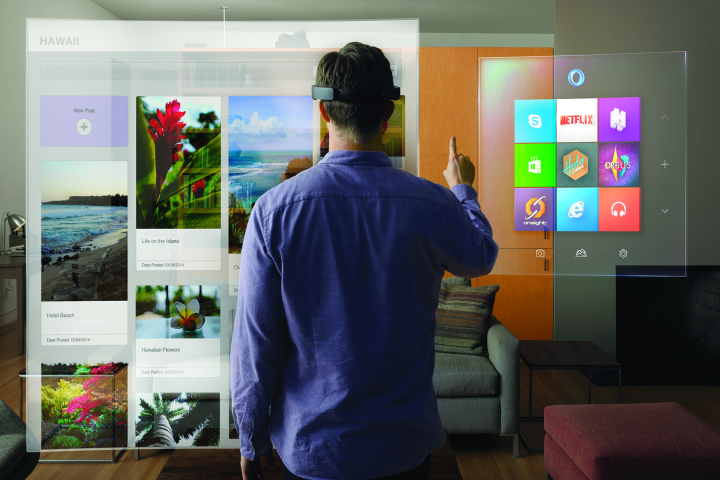
People went further than just Googling it. The HoloLens portion of Microsoft’s website was visited 50 million times throughout 2015, according to market intelligence firm SimilarWeb. In comparison, Oculus VR’s site was only hit 30 million times – though that might have changed substantially in the weeks after the opening of pre-orders.
The HTC Vive’s website had just 70,000 visits arrive from search engines, far behind even PlayStation VR’s 540,000.
HoloLens did have its biggest interest spike right after CES 2015, where it was unveiled for the first time. By November 2015 much interest had waned, with ‘only’ three quarters of a million visitors going to the site during that month.
Moving forward, SimilarWeb said that it sees Oculus winning the early VR/AR game, despite HoloLens’ popularity, but that other factors like content and even adult entertainment may play a large part in what becomes the most dominant platform.
Unlike the aforementioned virtual reality headsets, HoloLens is a little like Google Glass, as it uses ‘augmented” reality to overlay virtual elements in the real world. Microsoft has demonstrated this being used in creative ways. Architectures might use the device to obtain X-Ray vision, viewing the interiors of walls and ceilings with the use of blueprint data. Or if you’re more interested in leisure, HoloLens could turn your living room into a battleground.
In reality, it’s not quite as capable as that just yet. When our own Matt Smith tested the Hololens last year, he said it had a restricted field of view, and that the image quality still needed to be improved. The concept is excellent, but Microsoft’s device is much further from production than VR headsets from Oculus and HTC.



